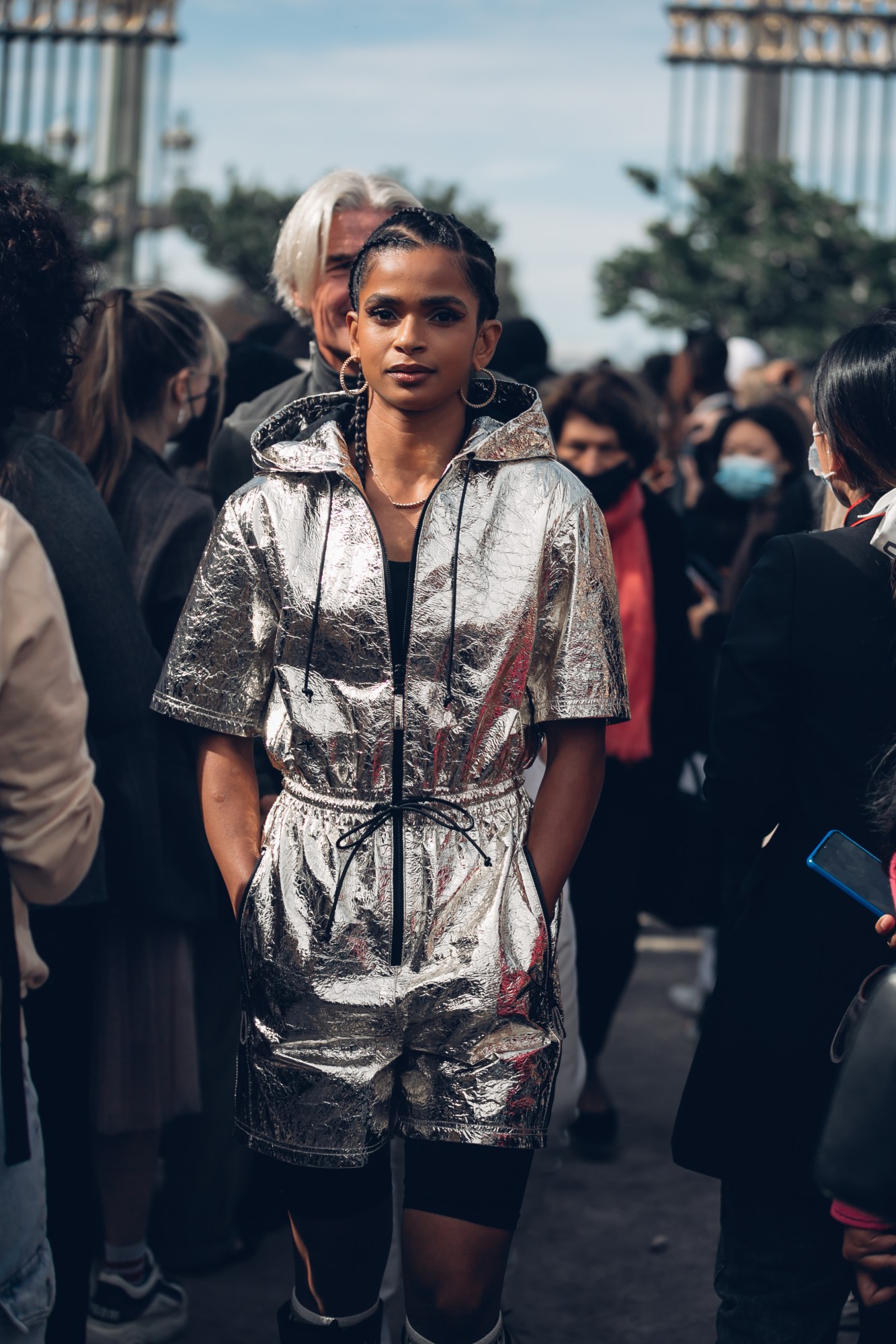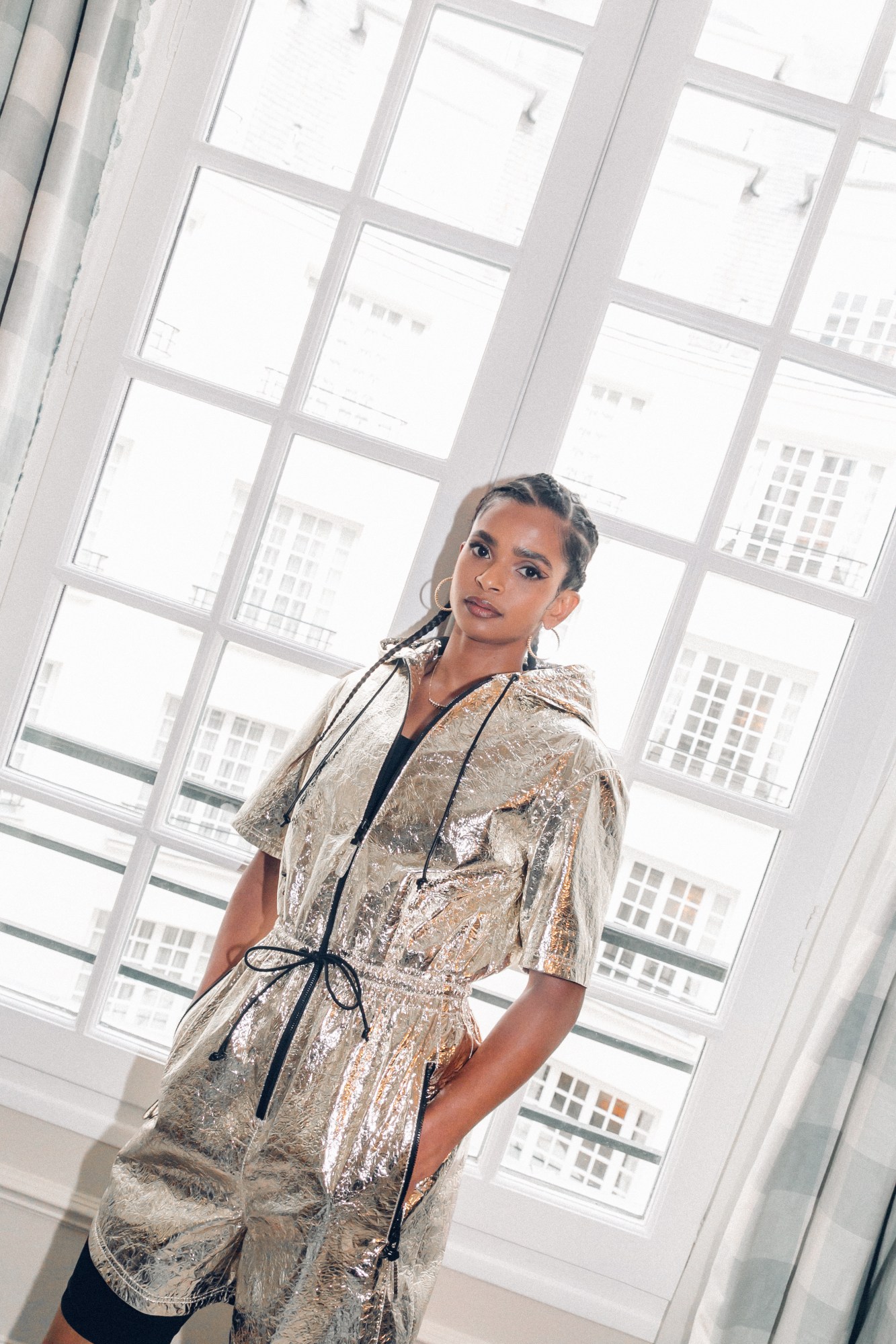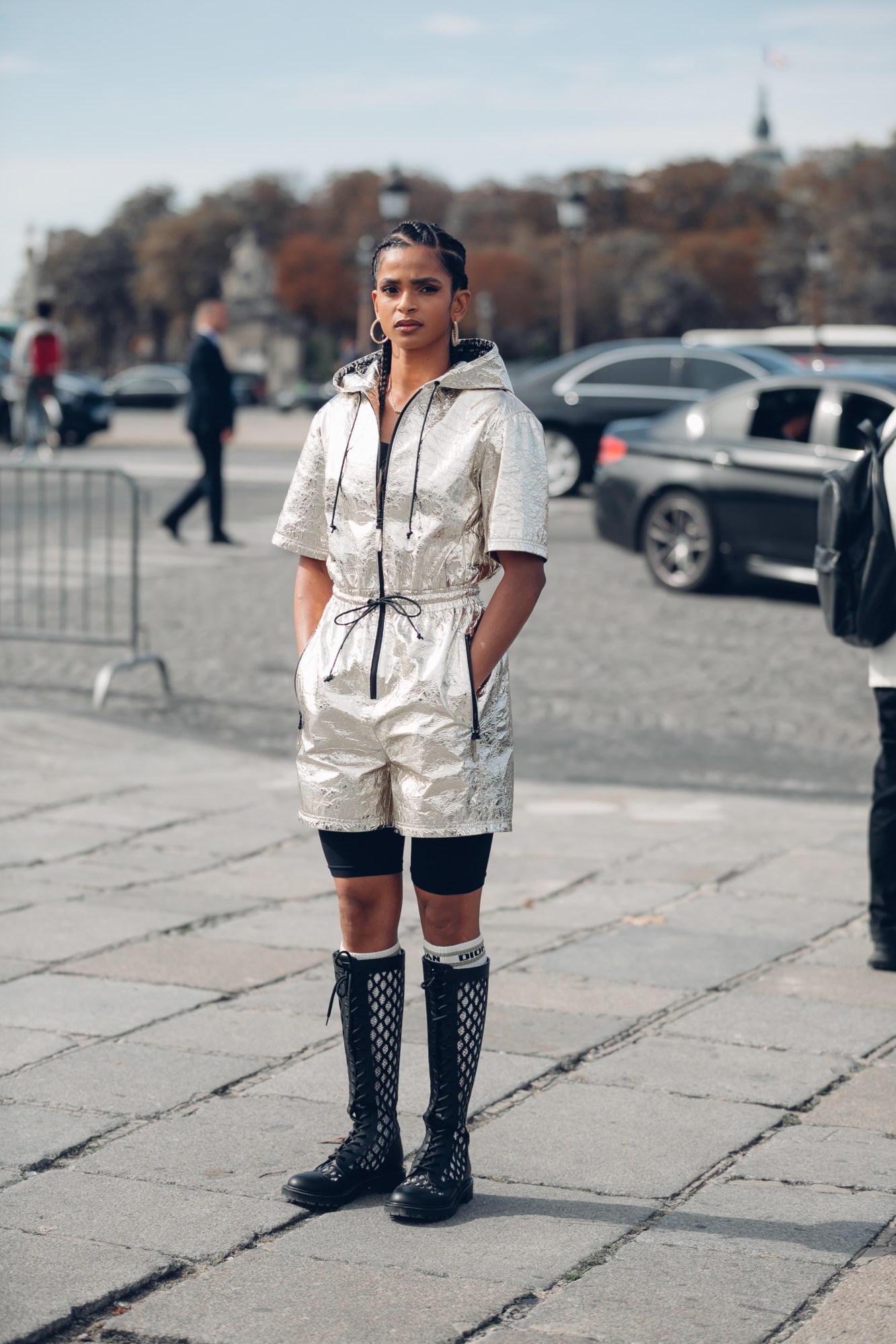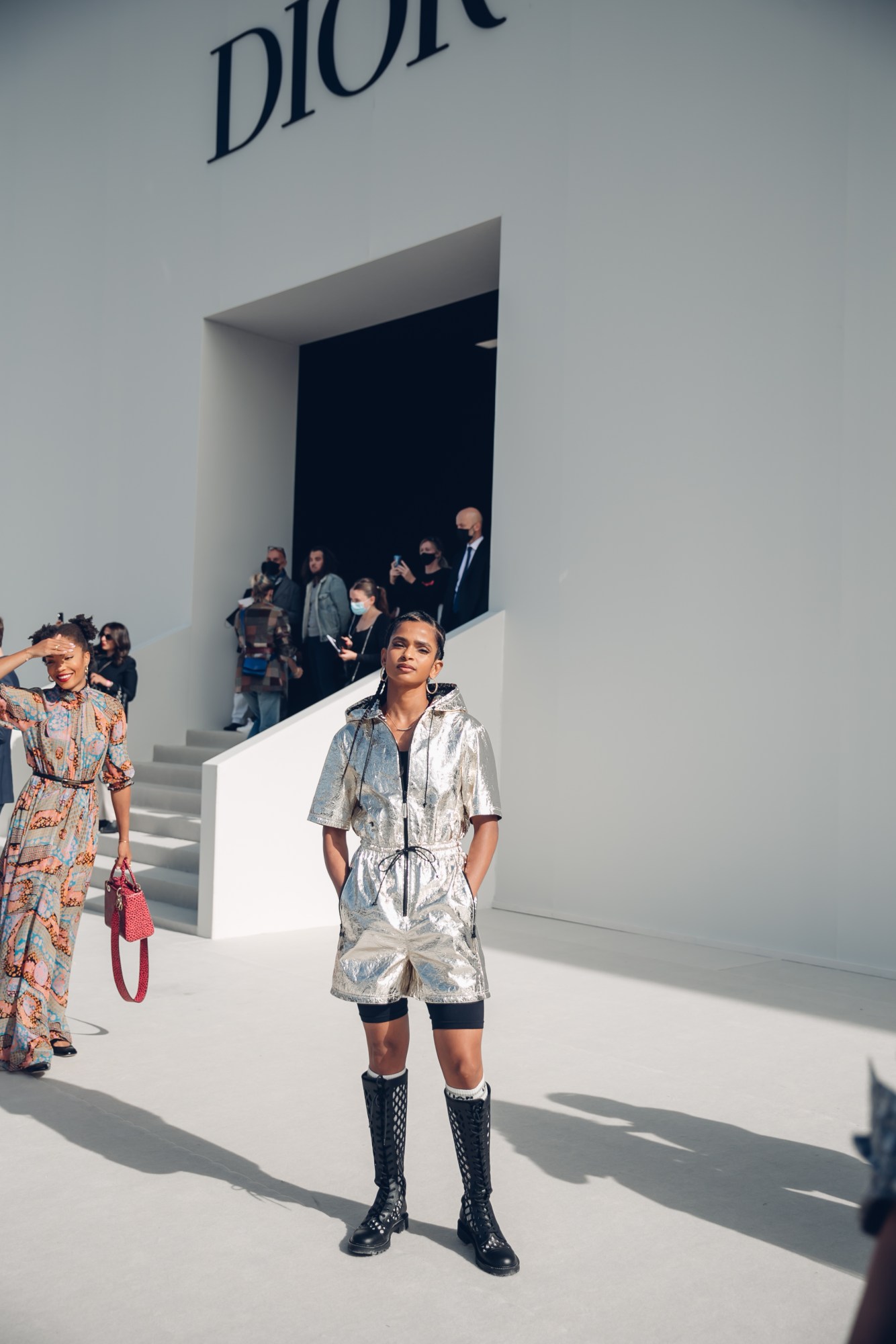If ever you’re looking for a story to be inspired by, then there are few better people to turn to than Ramla Ali. Straddling the worlds of fashion, sport and activism, with twin careers as an IMG-signed model and Olympian boxer, the Somali-born, London-raised athlete embodies an ethos of uncompromising commitment and is a walking example of how any talent can be applied to the benefit of a wider social cause. Whether setting up self-defence classes for vulnerable women in West London, competing in the Tokyo Olympics, or releasing her first book, Not Without A Fight, she’s proven herself to be someone who approaches everything she does with both humility and an iron-clad sense of conviction.
It’s these qualities that drew the attention and admiration of Maria Grazia Chiuri, the artistic director of Dior. So much so, in fact, that the Creative Director even looked to her for inspiration for the SS22 collection she presented yesterday. Punctuating the wide range of poppy, slim-line looks —an homage to the aesthetic pioneered by former Dior Creative Director Marc Bohan in the 60s — that set the template for this season were a neat series of sporty boxing separates. They were, Maria Grazia told us, both a direct nod to Ramla and an acknowledgment of the fact that “sports helped to emancipate women. It was impossible for women to be in the Olympic Games, and they had to fight for it. Initially, for them, they had to fight to be recognised”, a fight that Ramla and her peers are leading today.
Here, she fills us in on her new book, her unexpected Olympic experience and what embodies the spirit of Dior for her.
What five words would you say get to the heart of who you are?
Relentless, competitive, considerate, ambitious, dedicated.

Could you tell us a bit about how you first started boxing? What first drew you in?
I was 12 years old, dangerously overweight and unsure of myself. I was drawn into boxing through a boxercise class. I got into the sport long before social media and before there was so much free and available information on general health and exercise, and I loved the idea of being told what to do. I loved how my confidence was growing and seeing my mental and physical health go from strength to strength.
And what fuels your passion for it now?
The feeling of focus. There is nothing like the sensation of being in a fight and having your hand raised at the end. It’s the only time I think of nothing else in the world, and that level of focus is infectious and addictive. It’s an empowering sport because it’s literally the most male-dominated and male-recognised career you could choose. Being within it and helping to change peoples’ perspectives, and ensuring greater female equality, is what keeps me determined to continue.
You’ve also just released your first book, Not Without A Fight. What’s the story that you wanted to tell with it?
The story that I wanted to tell was of the importance of failure. The need to learn and move forward from mistakes, and not being suffocated by them, or be taken in by the idea that everything has to be perfect. Your path to success is not smooth and that’s okay. Without these lessons, you will never truly understand struggle or appreciate your achievements and how far you’ve come and grown from them. I want to inspire other young women who look and sound like me to believe they can achieve what I have and much more.

You recently competed in the Tokyo Olympics. What are the memories you cherish most from the experience?
Very little, to be honest, but I’m grateful and blessed to have raised the flag for Somalia, to have become the first Somali to have ever competed in the sport of boxing at the Olympics, and to have inspired a new generation of other young women to pursue a career in sport. That aside, it wasn’t the games I had hoped for. I went there unfunded by my country. We were the only team in the whole games who didn’t have a team tracksuit until the day of the opening ceremony. Like everyone else, I was not allowed to watch any other sport apart from my own, to leave the athlete village or to socialise with anyone who wasn’t on my direct team. On top of that my husband, who is also my coach and manager got appendicitis, and spent every day in hospital on an antibiotic drip, pleading with them not to remove it until after my fight, as otherwise I wouldn’t have been able to compete.
What do you find particularly inspiring about Maria Grazia Chiuri’s Dior?
I love her vision and the incredible designs she’s done over the last four years. If I could be dressed head to toe in Dior everyday, I would. I love how she’s taken such a prestigious luxury brand and pushed the boundaries with it. The Athens show earlier in the year was especially stunning. She truly thinks outside the box with her shows and the talent she works with. She’s not afraid to be herself and that’s what I can relate to the most.
To you, what words embody the spirit of Dior?
In my culture, we have a folklore figure by the name of Arawelo, who I think embodies the spirit of Dior. It’s about powerful women doing incredible work in their field and not asking for permission to create their art. That is my interpretation of Maria Grazia and what Dior are doing right now.
Tell us about the look you wore to the show. And what do you love most about it?
My look is very much styled to my personality. It’s not obvious and it’s not what you’d expect. I love mixing high-end fashion with sport. I do love heels and the shape it creates in a look but nine times out of ten, I will pick a flat, a trainer or a boot, which is what I did with this look. I know there’s an emphasis on looking great, but comfort also plays a big part in my idea of fashion.

